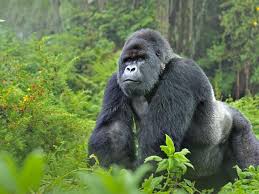Sources, Composition, Decomposition, and Mineralization of Soil Organic Matter and Soil Organisms
Soil organic matter is the organic component of the soil. It consists of all parts of living and dead plants and animals, micro-and macro-organisms, and products of decaying processes that occur in the soil.
The dark coloration of certain soils is attributed to the presence of organic matter because dark-colored colloidal humus compounds are able to coat mineral particles of soil; hence the darker the soil, the more organic matter it is likely to contain.
In addition to clay minerals in the soil, organic matter is a major source of plant nutrient elements. Organic matter also contributes to soil water-holding capacity, aggregate stability, permeability, and other desirable soil properties.
Soil Organic Matter and Organic Materials
You would have observed the presence of several types of litter on the surface of the forest or agricultural land especially when left to reverse to the bush. These litters include green leaves, dead leaves, crop residues (stubble and leaves), and even dead animals.
These are all referred to as organic materials which are generally moved into the soil by macro-and micro-organisms or may be incorporated into the soil by man.
In the soil, the organic materials are referred to as organic matter which is then decomposed by micro-organisms to release plant nutrients. The soil organic matter usually undergoes several stages of decomposition. Humus is the last stage of decomposition.
The greatest amount of organic matter in the soil resides in the topsoil. Shades of color indicate roughly the comparative quantity of organic matter in the soil. That is, the darker the soil, the more organic matter it is likely to contain.

Sources of Soil Organic Matter
There are two main sources of organic matter in soils. Plant sources are the most prevalent and important. These plant sources include dead and decayed plant roots, leaf droppings, crop residues, green manures, and dead and decayed “above-ground” parts of plants. Animal sources form the next most important source of soil organic matter.
They include all residues of animals and micro-organisms, domestic wastes, animal faces, animal feeds, and animal manures. The contribution of animal wastes in terms of nutrient supply depends primarily on the species of the animals (ruminant or non-ruminant), the type and part of the plant consumed, and the age of the animal as well as the plant.
Composition of Soil Organic Matter
About 75% of green tissue is made up of water while 90% of the remaining dry matter is made up of carbon, oxygen, and hydrogen. Nitrogen and other mineral elements constitute the remainder of organic matter.
The major source of soil organic matter (plant tissue) is made of very complex substances such as carbohydrates (Sugar, starch, hemicellulose, cellulose, pectiles, mucilages) lignins, proteins (soluble proteins and crude proteins), fats (oil), waxes, tannin, resins, pigments, and organo-mineral compounds.
The largest percentage of soil organic matter is made of lignins and proteins. Lignin builds up as the plant ages and it is resistant to decomposition. On the other hand, protein (which is readily decomposed) decreases as the plant ages. Lignin and protein contents of organic matter greatly influence its carbon/nitrogen ratio.
The organic matter of most soils ranges between 1-5% mostly in the top 25cm of soil, and the concentration reduces with depth except, relatively in cases in which deep plowing is being used to incorporate organic materials into the soil.
Decomposition of Organic Matter
The decomposition of organic matter in the soil involves the breakdown of complex organic compounds to simpler ones by the activities of micro-organisms such as bacteria, fungi, actinomycetes, algae, protozoa, etc.
Nutrients and energy are made available to the micro-organisms during the process of organic matter decomposition.
The benefits of organic matter as a source of plant nutrient and as a soil conditioner lies primarily in its decomposition. That is, for organic material to be useful it has to be decomposed.
The organic material is broken down into its constituent elements. Decomposition is essentially an oxidation process mediated by microbial enzymes and it is similar to the burning or digestion of food,
The products of decomposition are varied and numerous. The initial stage involves an attack by macro-organisms that break the big particles into smaller ones which are thereafter, incorporated into the soil by burrowing animals and are later invaded by micro-organisms.
The decomposition processes result in the release of first, energy; followed by simple end-products including carbon dioxide, water, ammoniacal compounds, sulphates, phosphates, and other plant nutrients; the more resistant component of the organic matter such as cellulose, hemicellulose, lignin and waxes; finally, there are the complex organic residues which have considerable stability and are resistant to further decomposition, for example, hummus.
When plant materials are incorporated into the soil, the sequence of decomposition is that sugars, starch, and soluble protein are the first to be readily decomposed, followed by crude proteins, hemicellulose, cellulose, tannin, fats, waxes, and lastly lignin and phenolic compounds. Humus is the last stable and resistant product of decomposition.
Mineralization of Organic Matter
This is the process involved in the release of plant nutrients from organic matter. Most of the soil nitrogen, phosphorus, and sulphur are present in the organic forms which are only converted to the mineral forms, utilizable by plants, through the mineralization process.
Mineralization of organic matter to release mineral nutrients is a two-step process, namely:
Aminization is the decomposition of organic matter by heterotrophic bacteria to release amino acids and amides.
Aminization is followed by ammonification which is the release of ammonium ions from amino acids and amides.
Read also: Soil Temperature and Plant Growth









